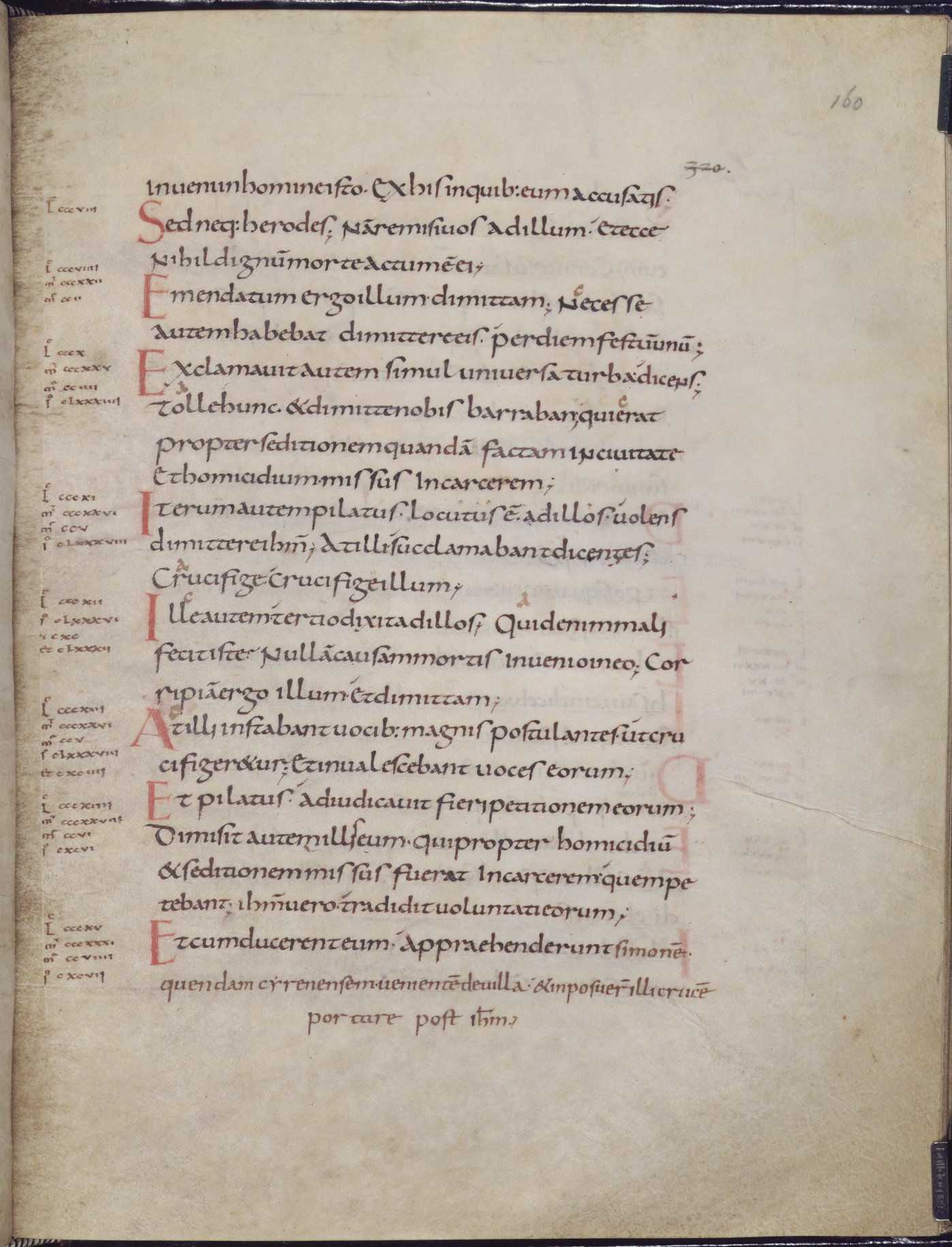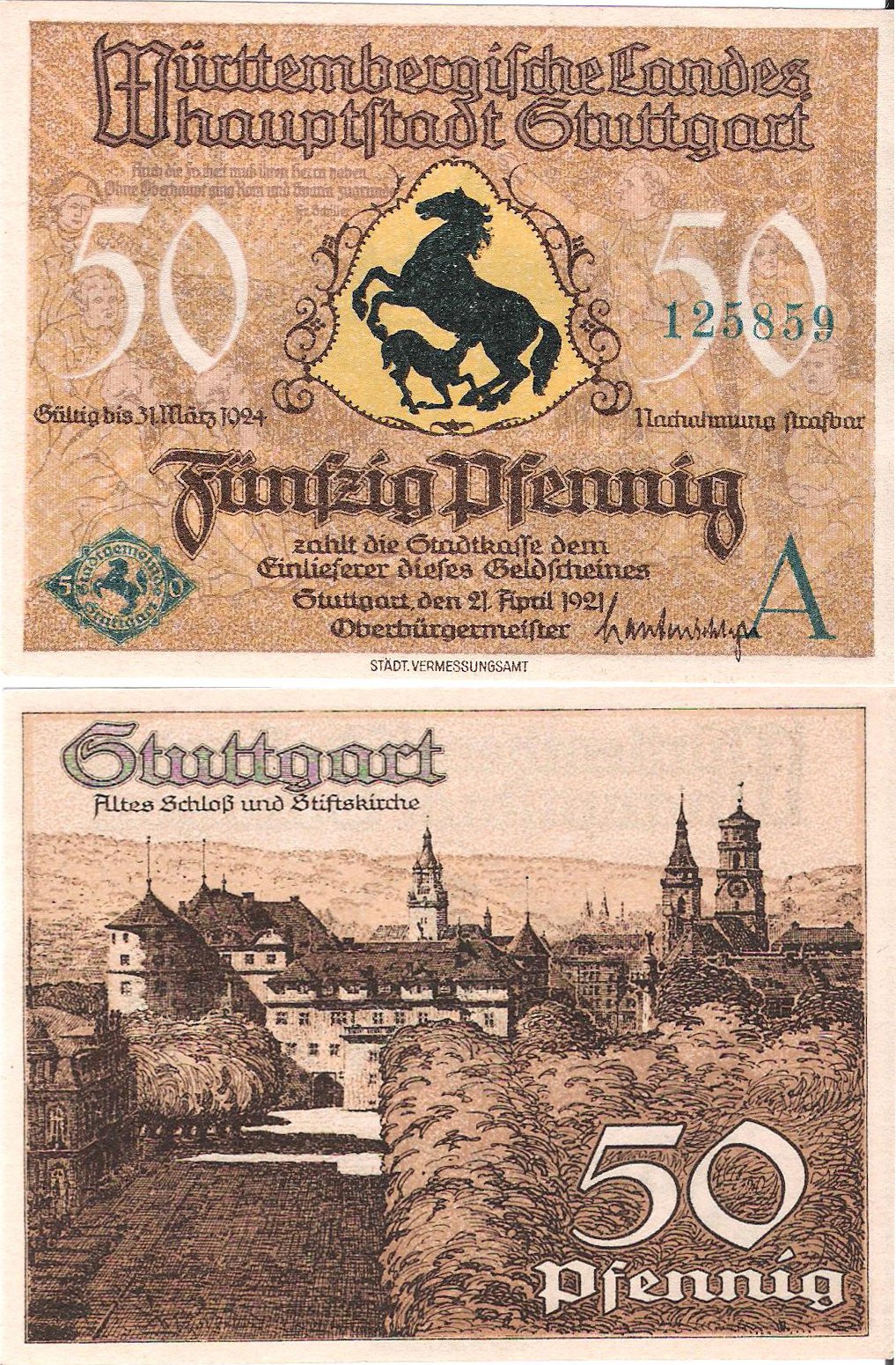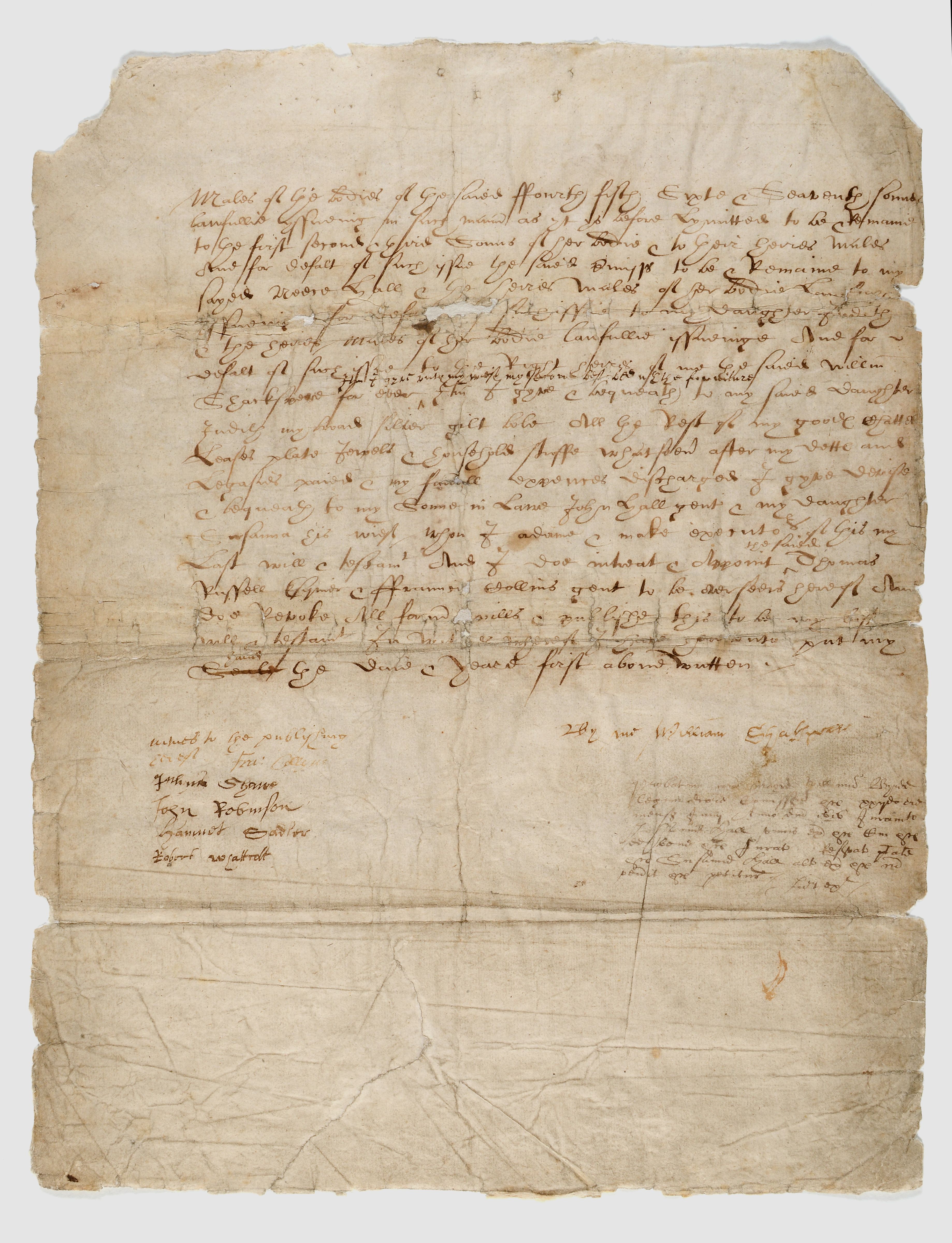|
Stuttgart Psalter
The Stuttgart Psalter (Württembergische Landesbibliothek Stuttgart, Bibl. fol. 23) is a richly illuminated 9th-century psalter, considered one of the most significant of the Carolingian period. Written in Carolingian minuscule, it contains 316 images illustrating the Book of Psalms according to the Gallican Rite. It has been archived since the late 18th century at the Württembergische Landesbibliothek in Stuttgart. History Through paleographic analysis undertaken by Bernhard Bischoff in the 1960s it is now commonly accepted that the manuscript originated around 820 at the scriptorium at St. Germain-des-Prés in Paris, a royal monastery which enjoyed the personal patronage of Charlemagne. The original owner or sponsor of the book is not known. The first mention of the manuscript's existence occurs in a letter dated in 1787 regarding its sale to Charles Eugene, Duke of Württemberg, and its presence in the ducal library at Stuttgart is recorded for the first time in 1818. Des ... [...More Info...] [...Related Items...] OR: [Wikipedia] [Google] [Baidu] |
Stuttgarter Psalter F2r
Stuttgart (; ; Swabian German, Swabian: ; Alemannic German, Alemannic: ; Italian language, Italian: ; ) is the capital city, capital and List of cities in Baden-Württemberg by population, largest city of the States of Germany, German state of Baden-Württemberg. It is located on the Neckar river in a fertile valley known as the ''Stuttgarter Kessel'' (Stuttgart Cauldron) and lies an hour from the Swabian Jura and the Black Forest. Stuttgart has a population of 632,865 as of 2022, making it the list of cities in Germany by population, sixth largest city in Germany, while over 2.8 million people live in the city's administrative region and nearly 5.5 million people in Stuttgart Metropolitan Region, its metropolitan area, making it the metropolitan regions in Germany, fourth largest metropolitan area in Germany. The city and metropolitan area are consistently ranked among the List of EU metropolitan regions by GDP#2021 ranking of top four German metropolitan regions, top 5 Europea ... [...More Info...] [...Related Items...] OR: [Wikipedia] [Google] [Baidu] |
Illuminated Manuscript
An illuminated manuscript is a formally prepared manuscript, document where the text is decorated with flourishes such as marginalia, borders and Miniature (illuminated manuscript), miniature illustrations. Often used in the Roman Catholic Church for prayers and liturgical books such as psalters and courtly literature, the practice continued into secular texts from the 13th century onward and typically include proclamations, enrolled bills, laws, charters, inventories, and deeds. The earliest surviving illuminated manuscripts are a small number from late antiquity, and date from between 400 and 600 CE. Examples include the Vergilius Romanus, Vergilius Vaticanus, and the Rossano Gospels. The majority of extant manuscripts are from the Middle Ages, although many survive from the Renaissance. While Islamic manuscripts can also be called illuminated and use essentially the same techniques, comparable Far Eastern and Mesoamerican works are described as ''painted''. Most manuscripts, ... [...More Info...] [...Related Items...] OR: [Wikipedia] [Google] [Baidu] |
Psalter
A psalter is a volume containing the Book of Psalms, often with other devotional material bound in as well, such as a liturgical calendar and litany of the Saints. Until the emergence of the book of hours in the Late Middle Ages, psalters were the books most widely owned by wealthy lay persons. They were commonly used for learning to read. Many psalters were richly illuminated, and they include some of the most spectacular surviving examples of medieval book art. The English term (Old English , ) derives from Church Latin. The source term is , which is simply the name of the Book of Psalms (in secular Latin, it is the term for a stringed instrument, from ''psalterion''). The Book of Psalms contains the bulk of the Divine Office of the Roman Catholic Church. The other books associated with it were the Lectionary, the Antiphonary, and Responsoriale, and the Hymnary. In Late Modern English, ''psalter'' has mostly ceased to refer to the Book of Psalms (as the text of a book ... [...More Info...] [...Related Items...] OR: [Wikipedia] [Google] [Baidu] |
Carolingian Art
Carolingian art comes from the Frankish Empire in the period of roughly 120 years from about 780 to 900—during the reign of Charlemagne and his immediate heirs—popularly known as the Carolingian Renaissance. The art was produced by and for the court circle and a group of important monasteries under Imperial patronage; survivals from outside this charmed circle show a considerable drop in quality of workmanship and sophistication of design. The art was produced in several centres in what are now France, Germany, Austria, northern Italy and the Low Countries, and received considerable influence, via continental mission centres, from the Insular art of the British Isles, as well as a number of Byzantine artists who appear to have been resident in Carolingian centres. There was for the first time a thoroughgoing attempt in Northern Europe to revive and emulate classical Mediterranean art forms and styles, that resulted in a blending of classical and Northern elements in a sumptuou ... [...More Info...] [...Related Items...] OR: [Wikipedia] [Google] [Baidu] |
Carolingian Minuscule
Carolingian minuscule or Caroline minuscule is a script which developed as a calligraphic standard in the medieval European period so that the Latin alphabet of Jerome's Vulgate Bible could be easily recognized by the literate class from one region to another. It is thought to have originated before 778 CE at the scriptorium of the Benedictine monks of Corbie Abbey, about north of Paris, and then developed by Alcuin of York for wide use in the Carolingian Renaissance. Alcuin himself still wrote in a script which was a precursor to the Carolingian minuscule, which slowly developed over three centuries. He was most likely responsible for copying and preserving the manuscripts and upkeep of the script. It was used in the Holy Roman Empire between approximately 800 and 1200. Codices, Christian texts, and educational material were written in Carolingian minuscule. After blackletter developed out of it, the Carolingian minuscule became obsolete, until the 14th century Ita ... [...More Info...] [...Related Items...] OR: [Wikipedia] [Google] [Baidu] |
Book Of Psalms
The Book of Psalms ( , ; ; ; ; , in Islam also called Zabur, ), also known as the Psalter, is the first book of the third section of the Tanakh (Hebrew Bible) called ('Writings'), and a book of the Old Testament. The book is an anthology of Hebrew religious hymns. In the Jewish and Western Christian traditions, there are 150 psalms, and several more in the Eastern Christian churches. The book is divided into five sections, each ending with a doxology, a hymn of praise. There are several types of psalms, including hymns or songs of praise, communal and individual laments, royal psalms, imprecation, and individual thanksgivings. The book also includes psalms of communal thanksgiving, wisdom, pilgrimage and other categories. Many of the psalms contain attributions to the name of King David and other Biblical figures including Asaph, the sons of Korah, Moses and Solomon. Davidic authorship of the Psalms is not accepted as historical fact by modern scholars, who view it a ... [...More Info...] [...Related Items...] OR: [Wikipedia] [Google] [Baidu] |
Gallican Rite
The Gallican Rite is a historical form of Christian liturgy and other ritual practices in Western Christianity. It is not a single Ritual family, liturgical rite but rather several Latin liturgical rites that developed within the Latin Church, which comprised the majority use of most of Western Christianity for the greater part of the 1st millennium AD. The rites first developed in the early centuries as the Syriac-Greek rites of Early centers of Christianity#Jerusalem, Jerusalem and Early centers of Christianity#Antioch, Antioch and were first translated into Latin in various parts of the Western Roman Empire Praetorian prefecture of Gaul. By the 5th century, it was well established in the Roman diocese, Roman civil diocese of Diocese of Gaul, Gaul, Christianity in Gaul, which had a few early centers of Christianity in the south. Ireland is also known to have had a form of this Gallican Liturgy mixed with Celtic customs. History and origin The Gallican Rite was used from before ... [...More Info...] [...Related Items...] OR: [Wikipedia] [Google] [Baidu] |
Charles Reginald Dodwell
Charles Reginald Dodwell (3 February 1922 – 22 April 1994) was a British art historian who specialized in the period covering the years 800–1200. Early life Dodwell was born in Cheltenham on 3 February 1922.The British Academ"1999 Lectures and Memorials"pp. 389-394 He was admitted to Gonville and Caius College, Cambridge, where he specialized in history. His academic studies were interrupted by the outbreak of World War II. He served in the Royal Navy from 1941 to 1945, although he suffered from sea-sickness. Initially serving as a mine-sweeper in the British home waters, he later took part in both the Allied invasion of Sicily and the Normandy landings. Academic career After the end of the war, Dodwell returned to Cambridge to complete his studies under Philip Grierson. He specialized in medieval art history, particularly in illuminated manuscripts. In 1949, he was made a senior research fellow of the Warburg Institute, which had been relocated a few years earlier from ... [...More Info...] [...Related Items...] OR: [Wikipedia] [Google] [Baidu] |
Württembergische Landesbibliothek
The State Library of Württemberg ( or WLB) is a large library in Stuttgart, Germany, which traces its history back to the ducal public library of Württemberg founded in 1765. It holds about 4 million volumes and is the fourth-largest library in the state of Baden-Württemberg (after the university libraries of University Library Freiburg, Freiburg, Heidelberg University Library, Heidelberg and University Library of Tübingen, Tübingen). The WLB owns an important collection of medieval manuscripts, as well as one of the largest Bible collections in the world. The WLB is one of two state libraries of Baden-Württemberg, the other being the Badische Landesbibliothek (BLB) at Karlsruhe. One of the library's main purposes is to archive written literature from and about the Regierungsbezirk (state subdivision) Tübingen and Regierungsbezirk Stuttgart (i.e. roughly the former land of Württemberg). The library is entitled to a legal deposit of every work published in Baden-Württem ... [...More Info...] [...Related Items...] OR: [Wikipedia] [Google] [Baidu] |
Stuttgart
Stuttgart (; ; Swabian German, Swabian: ; Alemannic German, Alemannic: ; Italian language, Italian: ; ) is the capital city, capital and List of cities in Baden-Württemberg by population, largest city of the States of Germany, German state of Baden-Württemberg. It is located on the Neckar river in a fertile valley known as the ''Stuttgarter Kessel'' (Stuttgart Cauldron) and lies an hour from the Swabian Jura and the Black Forest. Stuttgart has a population of 632,865 as of 2022, making it the list of cities in Germany by population, sixth largest city in Germany, while over 2.8 million people live in the city's administrative region and nearly 5.5 million people in Stuttgart Metropolitan Region, its metropolitan area, making it the metropolitan regions in Germany, fourth largest metropolitan area in Germany. The city and metropolitan area are consistently ranked among the List of EU metropolitan regions by GDP#2021 ranking of top four German metropolitan regions, top 5 Europea ... [...More Info...] [...Related Items...] OR: [Wikipedia] [Google] [Baidu] |
Paleography
Palaeography (American and British English spelling differences#ae and oe, UK) or paleography (American and British English spelling differences#ae and oe, US) (ultimately from , , 'old', and , , 'to write') is the study and academic discipline of historical writing systems. It encompasses the historicity of manuscripts and texts, subsuming deciphering and dating of historical manuscripts, as well as the analysis of historic penmanship, handwriting script, signification, and printed media. It is primarily concerned with the forms, processes and relationships of writing and printing systems as evident in a text, document or manuscript; and analysis of the substantive textual content of documents is a secondary function. Included in the discipline is the practice of deciphering, reading, and dating manuscripts, and the cultural context of writing, including the methods with which texts such as manuscripts, books, codices, Tract (literature), tracts, and monographs were produced, a ... [...More Info...] [...Related Items...] OR: [Wikipedia] [Google] [Baidu] |
Bernhard Bischoff
Bernhard Bischoff (20 December 1906 – 17 September 1991) was a German historian, paleographer, and philologist; he was born in Altendorf (administrative division of Altenburg, Thuringia), and he died in Munich. Biography He was the son of Emil Bischoff and Charlotte von Gersdorff, who died giving birth to him. He received a Pietistic education during his youth. He married Hanne Oehler in 1935 and lived the majority of his life in Bavaria outside of academia. Before he earned his doctorate in 1933, under the direction of Paul Lehmann, he was recruited by the American paleographer E. A. Lowe as an assistant for the '. He would work on this achievement until 1972, cataloging Latin manuscripts of the 9th century. He began to teach at the University of Munich in 1947, receiving the Chair of Medieval Latin Philology under his instructor, Lehmann, succeeding Ludwig Traube. In 1974 he became emeritus. In 1953, Bischoff was elected to the general editorship of the ' (MGH). In the la ... [...More Info...] [...Related Items...] OR: [Wikipedia] [Google] [Baidu] |







